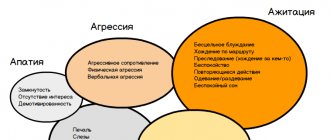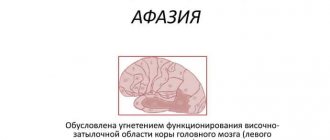Characteristics of the interactive side of communication.
⇐ PreviousPage 4 of 12Next ⇒The interactive side of communication is a conventional term denoting the characteristics of those components of communication that are associated with the interaction of people, with the direct organization of their joint activities.
Interaction (English interaction, Latin inter - between and actioactivity) is a term used in social psychology and cultural studies; denotes interaction, the mutual influence of people or the influence of groups on each other as a continuous dialogue.
The study of interaction problems has a long tradition in social psychology. It is intuitively easy to accept the undeniable connection that exists between communication and human interaction, but it is difficult to separate these concepts and thereby make experiments more precisely targeted. 1 Some authors simply identify communication and interaction, presenting both as communication in the narrow sense of the word (i.e., as an exchange of information), 2 others consider the relationship between interaction and communication as the relationship between the form of a certain process and its content. 3 Sometimes they prefer to talk about the connected, but still independent existence of communication as communication and interaction as interaction. Some of these discrepancies are generated by terminological difficulties, in particular by the fact that the concept of “communication” is used either in a narrow or in a broad sense of the word. If we adhere to the scheme proposed when characterizing the structure of communication, i.e. to believe that communication in the broad sense of the word (as the reality of interpersonal and social relations) includes communication in the narrow sense of the word (as the exchange of information), then it is logical to allow such an interpretation of interaction when it appears as another - in comparison with the communicative - side of communication .
If the communicative process is born on the basis of some joint activity, then the exchange of knowledge and ideas about this activity inevitably presupposes that the achieved mutual understanding is realized in new joint attempts to further develop the activity and organize it. The participation of many people in this activity at the same time means that everyone must make their own special contribution to it, which allows interaction to be interpreted as the organization of joint activity.
During it, it is extremely important for participants not only to exchange information, but also to organize an “ exchange of actions”
”, plan overall activities.
With this planning, it is possible to regulate the actions of one individual “by plans matured in the head of another, which makes the activity truly
when its carrier will no longer be an individual, but a group.
Thus, the question of what “other” side of communication is revealed by the concept of “interaction” can now be answered: the side that captures not only the exchange of information, but also the organization of joint actions that allow partners to implement some common activity.
This solution to the issue excludes the separation of interaction from communication, but also excludes their identification: communication is organized in the course of joint activity, “about” it, and it is in this process that people need to exchange both information and the activity itself, i.e. develop forms and norms of joint actions.
theory of social action , in which a description of the individual act of action was proposed in various versions, became widespread Everyone recorded some components of interaction: people, their connections, their impact on each other and, as a consequence, their changes. The task was always formulated as a search for the dominant factors motivating actions in interaction.
Finally, another approach to the structural description of interaction is presented in transactional (perfect) analysis - a direction that proposes regulating the actions of interaction participants through regulating their positions, as well as taking into account the nature of situations and the style of interaction. From the point of view of transactional analysis, each participant in the interaction can, in principle, occupy one of three positions, which can be conventionally designated as Parent, Adult, Child.
These positions are in no way necessarily associated with the corresponding social role: this is only a purely psychological description of a certain strategy in interaction (the position of the Child can be defined as the position of “I want!”, the position of the Parent as “I must!”, the position of the Adult - unification <I want> and <I need>). Interaction is effective when transactions are of an “additional” nature, i.e. coincide: if a partner addresses another as an Adult, then he also responds from the same position. If one of the participants in the interaction addresses the other from the position of an Adult, and the other responds to him from the position of a Parent, then the interaction is disrupted and may stop altogether. In this case, the transactions are “overlapping”.
Strategies and structure of interpersonal interaction.
https://rudocs.exdat.com/docs/index-228045.html?page=6
Management and leadership.
In order to clearly define the problem of leadership in management, it is necessary to differentiate the concepts of “management”, “management” and “leadership”.
Management is usually understood as the process of organizing any influence aimed at realizing the pursued goals (FOOTNOTE: Yudin V.V. Leadership style. Social and psychological problems of leadership // Psychology and ethics of business communication. / Edited by V. N. Lavrinenko. M. , 1997. pp. 155-158). Leadership is only a part of management activity, and precisely that part in which various management issues are resolved by influencing subordinates.
The distinction between the concepts of “management” and “leadership” is associated with the existence in any organization of two types of relationships - formal and informal. Leadership is a process of influencing people, generated by a system of informal relationships, and leadership implies, first of all, the presence of clearly structured formal (official) relationships through which it is implemented. The role of the leader is, as it were, predetermined by the formal structure, his functions, as a rule, are clearly defined, the right to apply sanctions is not disputed, etc. Leadership, on the contrary, is formed spontaneously, spontaneously, at the level of semi-conscious psychological preferences.
A leader and a manager go through different paths to promotion. The leader, even if he was initially proposed by someone from the outside, is recognized, accepted, and finally elected by the group he leads. In this sense, the leader is always nominated “from below,” more or less democratically. The leader, on the contrary, is appointed “from above” and is imposed in one way or another. Since this appointment may be of a political or administrative nature, followers can express their attitude towards it in different ways, in certain cases even block it. But even then another candidate will most likely be appointed “from above.” Figuratively speaking, leadership can be denoted by a vector directed from the bottom up; guidance is a vector of the opposite direction.
The main differences between management and leadership can be expressed as follows:
— the leader regulates interpersonal relations in the group, the leader regulates the official relations of the group as a kind of social organization;
— leadership can be stated in a microenvironment (small group), leadership is an element of the macroenvironment;
— leadership arises spontaneously, the process of appointing a leader is not spontaneous, compared to leadership, leadership is less stable and largely depends on the mood in the group;
— the leadership of subordinates has a certain system of various sanctions, which are not in the hands of the leader;
— the decision-making process of a leader is complex and mediated by many circumstances that are not necessarily rooted in a given group, while the leader makes more direct decisions;
- the leader’s sphere of activity is mainly a small group; the leader’s sphere of action is the wider social system.
But despite all the typical differences, we can point out that there is sometimes a combination of the roles of leader and manager. In this case, the leader-manager, as evidenced by studies of the activities of successful organizations conducted by scientists at the University of Michigan, is characterized by the following parameters:
1. Compared to detailed, specific management of employees, general guidance to achieve the goal prevails.
2. More time is devoted to managerial work compared to individual instructions to workers.
3. Much attention is paid to planning work and solving special problems.
4. Employees are regularly involved in the decision-making process.
5. An approach to the employee is used that puts him at the center of labor interests and helps to increase labor productivity. At the same time, sincere concern for is expressed and demonstrated. workers' needs and problems.
It is important to note that different employees have different effects on the functioning of the team. Success in a manager's work lies in his ability to combine the requirements for successful work with a personal approach to employees, encouraged and respected for their contribution to production activities.
Most psychologists agree that a successful manager must become a leader capable of influencing the opinions, positions, and performance activities of employees. World-class companies that are well known around the world are led by outstanding leadership leaders.
Leadership as a management function that encourages action is based mainly on instructions, prescriptions, directions, appointments, orders, and also includes the creation of an effective system of influence, stimulating the interests and enthusiasm of employees to achieve goals.
In situations where the manager is faced with the work of previously formed groups with developed work skills, he needs to pay more attention to instruction and control to further develop the skills of workers. In the process of taking leadership positions, he must pay attention to the socio-psychological climate in the group and the sense of belonging to it. Therefore, it is necessary to reduce the proportion of orders compared to explanatory work.
Further relations between leaders and subordinates, points out V. A. Rozanova, are built in such a way that the former are required to show greater responsibility for the work performed by the latter. At the same time, the leader limits control and direct instructions in the work of performers, setting them up for self-control and conducting consultations only on specific issues. At the same time, they are recommended to communicate more with employees, encourage advice coming from them, and establish feedback. To develop the creative thinking of highly skilled employees, the leader sets goals for them without telling them how to achieve them.
A leader has the power of authority, and a manager has the power of authority. American psychologist J.P. Kendzhemi notes that the power of authority, in contrast to the power of authority, is the ability to encourage, motivate people, convince them, encourage them. In contrast to the power of authority, the power of authority is assigned to a subject by a group and is a kind of reward for the group. This has its own danger - the power of authority is relatively easy to lose.
⇐ Previous4Next ⇒
Communication and its functions
Levels of communication: ritual or social-role; businesslike or manipulative; intimate and personal.
1. Ritual, or social-role level. The purpose of communication at this level is to fulfill the role expected of a person and demonstrate knowledge of the norms of the social environment. Communication in this case is, as a rule, impersonal in nature (in meaning), regardless of whether it occurs between strangers, acquaintances or close people.
2. Business, or manipulative, level. The purpose of such communication is to organize joint activities and search for means to increase the effectiveness of cooperation. In this case, partners are assessed not as unique, inimitable individuals, but from the point of view of how well they can complete the tasks assigned to them, that is, their functional qualities are assessed. Accordingly, communication is psychologically detached - the so-called dominates. “I–You” contact.
3. Intimate and personal level. The purpose of communication is to satisfy the needs for understanding, sympathy, empathy, and acceptance. Communication at this level is characterized by psychological closeness, empathy, trust - the so-called dominates. “I–You” contact.
The functions of communication are considered from the socio-psychological perspective of the three aspects of communication and interaction between people analyzed above: communicative, interactive and perceptual. The following communication functions are distinguished: contact; informational; motivating; coordination; understanding; emotive; relationships; influence.
1. Contact function is the establishment of contact as a state of mutual readiness to receive and transmit information messages and maintain relationships in the form of constant mutual orientation.
2. Information function is an informative exchange of messages, opinions, plans, decisions.
3. The incentive function is a certain socio-psychological stimulation and/or interpersonal motivation for the activity of a communication partner, in order for him to perform certain actions and make certain decisions.
4. The coordination function is mutual meaningful orientation, which has activity significance for communication partners, and semantic coordination of actions when organizing joint activities.
5. The function of understanding is, ideally, adequate perception and understanding of the meaning of information messages, and mutual understanding of intentions, attitudes, experiences, states of each other by communication and interaction partners.
6. Emotive function – creating in a communicative partner the emotional experiences necessary for a given particular subject of communication, as well as changing his experiences and states with his help.
7. The function of establishing relationships is the awareness of the subject of interaction and the fixation by him, from the perspective of interaction with various subjects of communication, of his socio-professional place in the system of role, status, business, interpersonal and other relationships of the society (community) in which communication takes place.
8. The function of exerting influence is a change in the state, behavior, personal and semantic formations of a communication partner, carried out through the use of various psychosocial techniques of influencing him.









